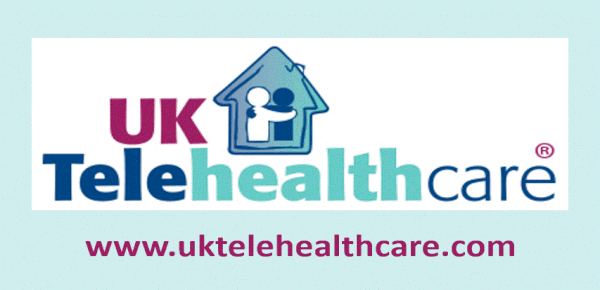 The Securities and Exchange Commission comes knocking on RTW Investments’ door…and they have no sense of humor. Though the proxy war is over now for two months and Politan Capital Management is firmly in control, with losing founder Joe Kiani departing in a classic ‘you’re fired/I quit’ scenario that’s dissolved in a flurry of lawsuits from New York to California [TTA 15 Nov], the next shoe dropping can land Kiani and his ally Roderick Wong of RTW into some extremely hot soup, to strain two metaphors.
The Securities and Exchange Commission comes knocking on RTW Investments’ door…and they have no sense of humor. Though the proxy war is over now for two months and Politan Capital Management is firmly in control, with losing founder Joe Kiani departing in a classic ‘you’re fired/I quit’ scenario that’s dissolved in a flurry of lawsuits from New York to California [TTA 15 Nov], the next shoe dropping can land Kiani and his ally Roderick Wong of RTW into some extremely hot soup, to strain two metaphors.
The SEC is now investigating the “empty voting” scheme apparently used by Kiani’s side in the proxy war. Masimo had already sued Kiani and RTW in the US District Court for the Southern District of New York charging that they used empty voting to manipulate the shareholder vote in favor of Kiani. Masimo is claiming that this action rigged 19% of the vote under Kiani’s and allies’ control. As noted in our November article, empty voting is done through put options or by selling the shares after the record date but before the shareholder meeting. It’s a way for an investor to build up share control and sway the outcome of a shareholder vote at little cost.
Strata-gee yesterday (5 Dec) reported that Bloomberg News (paywalled), during last week’s pre-Thanksgiving ‘news black hole’, broke that the SEC is probing RTW, a $6.5 billion hedge fund. Its head Roderick Wong is cooperating with the probe. He characterized it to his investors as a ‘fact-finding investigation’ and accurately characterized it as “the existence of a probe doesn’t mean laws were broken” in a message on Monday 25 November. A SEC probe is not necessarily safe as milk–see the last part of this article.
However, as Strata-gee reports, empty voting is not necessarily illegal. It is Masimo’s stating that it has evidence that Kiani and RTW conspired to form an insider group–and insider groups always ring bells for the SEC especially during a proxy fight. And where there’s the SEC, there is the Department of Justice. Witness the interest in insider trading in the form of stock sales by executives at UnitedHealth Group while a DOJ probe was happening but not public–and the resurgence of interest in UHG’s legal difficulties as part of the shocking recent events–which have caused industry executives to scrub their profiles from corporate websites. Healthcare Dive.
Why this matters to us in healthcare tech. Masimo makes consumer and professional medical devices, including smartwatches, that measure vital signs including pulse oximetry where they have a brace of patents. Their global revenue in 2023 was over $2 billion. Medical Design and Outsourcing Last year at this time, Masimo was the David wrestling Goliath Apple to the mats with ITC (International Trade Commission) bans on the new Apple Watch 9 and Ultra 2 last Christmas season, forcing Apple to pull them from sale and disable the feature violating the Masimo patents. Masimo continues to challenge Apple patents in court with mixed results, most recently reported in mid-October. Since the new Masimo is actively selling or spinning off its audio brands, what remains is their healthcare technology business.
A cautionary tale. This Editor, as a subscriber to Strata-gee (an audio business specialist website) after finding Editor Ted Green’s talented writing there in following the Masimo Mess, wanted to share from today’s subscriber email his description of a SEC probe at a former employer. Basically, the SEC doesn’t launch investigations unless they have good reason to do so, and they turn your company’s life upside down doing it. Mr. Wong will be holding court for a group of guests for awhile. Editor Ted has a reminiscence of when it happened at the well-known audio brand Onkyo, which was treated as a suspect in the legendary Crazy Eddie (“his prices are insaaaaane!”) retail electronics chain fraud.
Have I ever told you the story about the day, many years ago, when about 20 agents of the Securities and Exchange Commission (SEC) and the Federal Bureau of Investigation (FBI) came storming through the main entrance of Onkyo USA, marched into the President’s office (who was in a meeting that was hastily dismissed) and delivered a Search Warrant? (This is not a joke!) I learned a few things that day about the men and women of the SEC: 1) Most of them were armed with weapons that could deliver deadly force; 2) They were as serious as a heart attack; and 3) They would take office space in our facility and stay for weeks, as they forensically examined everything about our business. It turned out that this was part of an investigation into Crazy Eddie, a New York dealer that they suspected had engaged in illegal activities. As one of their top suppliers, Onkyo was considered a potential co-conspirator until we proved we weren’t…which, thankfully, we did – and they came to see us as one of the victims of Eddie Antar’s scheme and NOT a partner.
No apologies rendered, I’d guess. Or payback for the sandwiches and coffee.

















Most Recent Comments